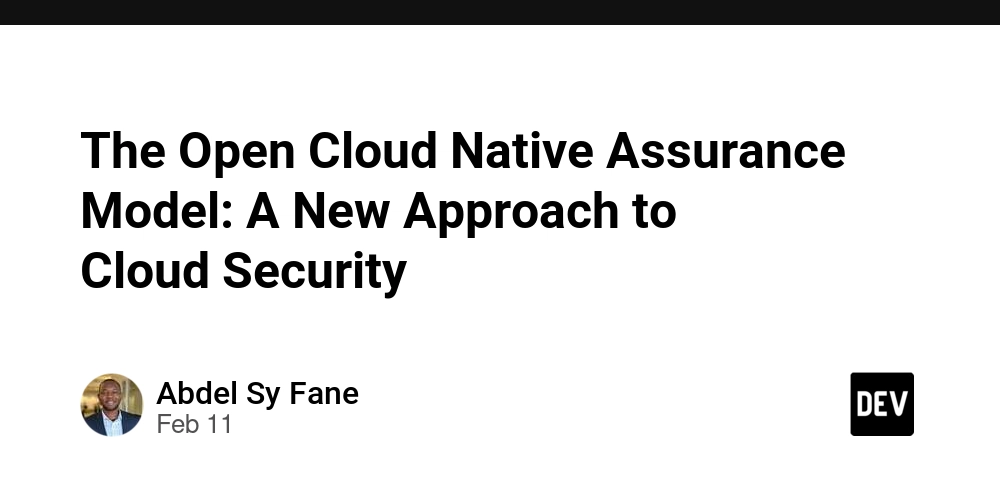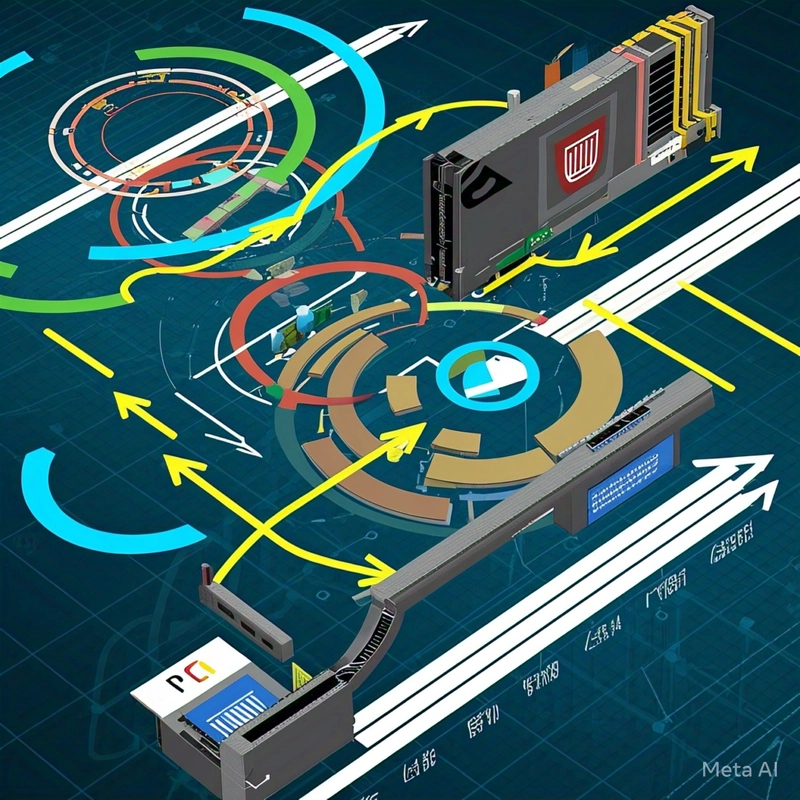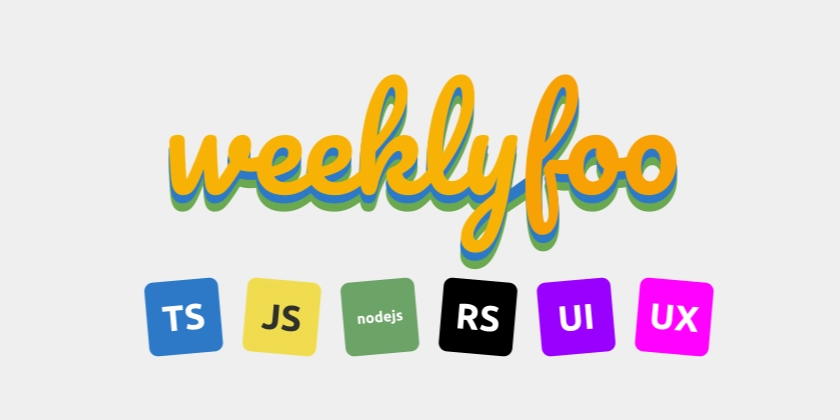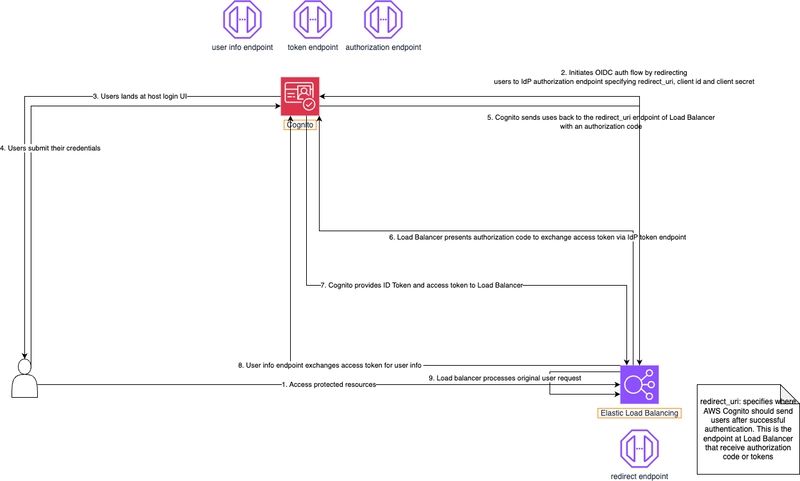The Open Cloud Native Assurance Model: A New Approach to Cloud Security
Why Cloud Security Needs a New Playbook Cloud-native architecture has revolutionized the way organizations build and deploy applications. Yet, while businesses have embraced microservices, containers, and continuous delivery, security practices often remain rigid, reactive, and misaligned with modern development workflows. The result? Security becomes a bottleneck, slowing down innovation rather than enabling it. A 2023 Gartner report predicted that by 2026, 75% of organizations will restructure their cloud security strategies due to misalignment with DevOps and software delivery speed. This mismatch leads to: Delayed product launches due to slow security reviews. Engineering friction caused by rigid security policies. Fragmented security tooling that disrupts developer workflows. Lack of security ROI visibility, making it hard for leadership to justify investments. And with the surge in software supply chain attacks—such as the SolarWinds breach and Log4j vulnerability—organizations can no longer afford a patchwork approach to security. A new model is needed—one that integrates business objectives, engineering velocity, and real-world security risks, rather than hindering innovation. Why Traditional Security Approaches Fail in Cloud-Native Environments Many companies attempt to "shift left" and enforce security controls early in the development process. While this is a step in the right direction, traditional security frameworks often fail to scale in cloud-native environments. Why? Quarterly security reviews can't keep up with daily deployments. Centralized security teams lack visibility into thousands of microservices. Compliance-driven security results in checkbox security, not real risk reduction. Instead of blocking engineers, security should be an enabler—providing context-aware guidance, automated enforcement, and business-aligned security investments. Introducing Cloud Native Assurance Maturity Model (CNAMM) The Cloud Native Assurance Maturity Model (CNAMM) provides a structured, scalable approach to cloud-native security, integrating business risk management, developer velocity, and continuous security assurance. Rather than enforcing one-size-fits-all security, CNAMM enables adaptive security strategies based on an organization’s: Industry and regulatory requirements (e.g., PCI-DSS for fintech, HIPAA for healthcare). Cloud maturity level (early-stage vs. enterprise). Technology stack and CI/CD pipeline complexity. The 8 Pillars of CNAMM CNAMM spans eight key areas critical to cloud-native security governance: Strategy & Risk Governance – Aligning security with business objectives. Supply Chain & Vendor Security – Reducing risk across the software supply chain. Infrastructure & Platform Security – Protecting cloud environments and workloads. Application & Data Protection – Implementing secure coding and data encryption. Identity & Access Governance – Enforcing least privilege and zero trust. Runtime Security Operations – Continuous monitoring and real-time threat detection. Threat Detection & Response – Automating security incident management. Resilience & Service Assurance – Ensuring business continuity and disaster recovery. What Makes CNAMM Different? Evidence-Based Evaluation CNAMM provides quantifiable security metrics to measure risk reduction, security ROI, and compliance progress. Industry-Specific Security Controls A fintech company securing payment transactions has different needs** than a media company managing streaming data. CNAMM adapts accordingly. Business-Aligned Security Security investments are mapped directly to business goals, ensuring leadership buy-in. Automated Security Validation Integration with CI/CD pipelines ensures security is continuous and non-disruptive. Real-World Impact of CNAMM Since implementing CNAMM, organizations have seen measurable improvements in security efficiency and cost optimization: ✅ 40% reduction in security tool costs for a healthcare provider—without compromising security. ✅ 3x faster compliance validation for a financial services firm—thanks to automated security assessments. ✅ $1.4M savings for a technology company—by optimizing security investments. The Future of Cloud-Native Security At DevSecFlow, our mission goes beyond frameworks. We are building a community-driven movement to reshape how organizations approach cloud-native security. With CNAMM, we’re helping organizations: ✅ Make data-driven security investment decisions ✅ Demonstrate security ROI to executive leadership ✅ Optimize cloud-native security while enabling innovation Join the CNAMM Movement Security should empower, not obstruct cloud-native development. CNAMM provides the structure, automation, and insights needed to build scalable, busine

Why Cloud Security Needs a New Playbook
Cloud-native architecture has revolutionized the way organizations build and deploy applications. Yet, while businesses have embraced microservices, containers, and continuous delivery, security practices often remain rigid, reactive, and misaligned with modern development workflows.
The result? Security becomes a bottleneck, slowing down innovation rather than enabling it.
A 2023 Gartner report predicted that by 2026, 75% of organizations will restructure their cloud security strategies due to misalignment with DevOps and software delivery speed. This mismatch leads to:
- Delayed product launches due to slow security reviews.
- Engineering friction caused by rigid security policies.
- Fragmented security tooling that disrupts developer workflows.
- Lack of security ROI visibility, making it hard for leadership to justify investments.
And with the surge in software supply chain attacks—such as the SolarWinds breach and Log4j vulnerability—organizations can no longer afford a patchwork approach to security.
A new model is needed—one that integrates business objectives, engineering velocity, and real-world security risks, rather than hindering innovation.
Why Traditional Security Approaches Fail in Cloud-Native Environments
Many companies attempt to "shift left" and enforce security controls early in the development process. While this is a step in the right direction, traditional security frameworks often fail to scale in cloud-native environments.
Why?
- Quarterly security reviews can't keep up with daily deployments.
- Centralized security teams lack visibility into thousands of microservices.
- Compliance-driven security results in checkbox security, not real risk reduction.
Instead of blocking engineers, security should be an enabler—providing context-aware guidance, automated enforcement, and business-aligned security investments.
Introducing Cloud Native Assurance Maturity Model (CNAMM)
The Cloud Native Assurance Maturity Model (CNAMM) provides a structured, scalable approach to cloud-native security, integrating business risk management, developer velocity, and continuous security assurance.
Rather than enforcing one-size-fits-all security, CNAMM enables adaptive security strategies based on an organization’s:
- Industry and regulatory requirements (e.g., PCI-DSS for fintech, HIPAA for healthcare).
- Cloud maturity level (early-stage vs. enterprise).
- Technology stack and CI/CD pipeline complexity.
The 8 Pillars of CNAMM
CNAMM spans eight key areas critical to cloud-native security governance:
- Strategy & Risk Governance – Aligning security with business objectives.
- Supply Chain & Vendor Security – Reducing risk across the software supply chain.
- Infrastructure & Platform Security – Protecting cloud environments and workloads.
- Application & Data Protection – Implementing secure coding and data encryption.
- Identity & Access Governance – Enforcing least privilege and zero trust.
- Runtime Security Operations – Continuous monitoring and real-time threat detection.
- Threat Detection & Response – Automating security incident management.
- Resilience & Service Assurance – Ensuring business continuity and disaster recovery.
What Makes CNAMM Different?
Evidence-Based Evaluation
- CNAMM provides quantifiable security metrics to measure risk reduction, security ROI, and compliance progress.
Industry-Specific Security Controls
- A fintech company securing payment transactions has different needs** than a media company managing streaming data. CNAMM adapts accordingly.
Business-Aligned Security
- Security investments are mapped directly to business goals, ensuring leadership buy-in.
Automated Security Validation
- Integration with CI/CD pipelines ensures security is continuous and non-disruptive.
Real-World Impact of CNAMM
Since implementing CNAMM, organizations have seen measurable improvements in security efficiency and cost optimization:
✅ 40% reduction in security tool costs for a healthcare provider—without compromising security.
✅ 3x faster compliance validation for a financial services firm—thanks to automated security assessments.
✅ $1.4M savings for a technology company—by optimizing security investments.
The Future of Cloud-Native Security
At DevSecFlow, our mission goes beyond frameworks. We are building a community-driven movement to reshape how organizations approach cloud-native security.
With CNAMM, we’re helping organizations:
- ✅ Make data-driven security investment decisions
- ✅ Demonstrate security ROI to executive leadership
- ✅ Optimize cloud-native security while enabling innovation
Join the CNAMM Movement
Security should empower, not obstruct cloud-native development. CNAMM provides the structure, automation, and insights needed to build scalable, business-aligned security practices.
[Download the CNAMM Framework on Git]
References
- Gartner, "Cloud Security Predictions for 2026," 2023
- Verizon, "Data Breach Investigations Report," 2023
- NIST, "Cybersecurity Framework (CSF) for Cloud," 2024
Originally published on DevSecFlow.
What’s Next?












































































































































































![[The AI Show Episode 142]: ChatGPT’s New Image Generator, Studio Ghibli Craze and Backlash, Gemini 2.5, OpenAI Academy, 4o Updates, Vibe Marketing & xAI Acquires X](https://www.marketingaiinstitute.com/hubfs/ep%20142%20cover.png)



























































































































![[DEALS] The Premium Learn to Code Certification Bundle (97% off) & Other Deals Up To 98% Off – Offers End Soon!](https://www.javacodegeeks.com/wp-content/uploads/2012/12/jcg-logo.jpg)


![From drop-out to software architect with Jason Lengstorf [Podcast #167]](https://cdn.hashnode.com/res/hashnode/image/upload/v1743796461357/f3d19cd7-e6f5-4d7c-8bfc-eb974bc8da68.png?#)








































































































.png?#)


































_Christophe_Coat_Alamy.jpg?#)


.webp?#)
 (1).webp?#)



































































































![Apple Considers Delaying Smart Home Hub Until 2026 [Gurman]](https://www.iclarified.com/images/news/96946/96946/96946-640.jpg)
![iPhone 17 Pro Won't Feature Two-Toned Back [Gurman]](https://www.iclarified.com/images/news/96944/96944/96944-640.jpg)
![Tariffs Threaten Apple's $999 iPhone Price Point in the U.S. [Gurman]](https://www.iclarified.com/images/news/96943/96943/96943-640.jpg)





































































































































